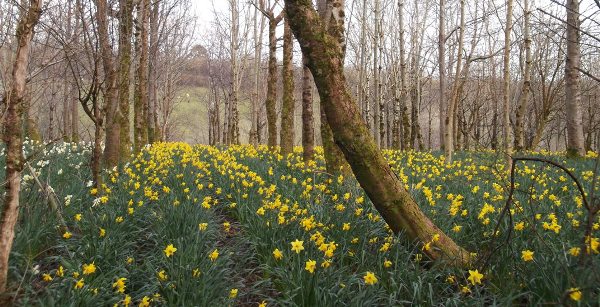 The daffodil picking season at Treragin Wood is coming towards the end now, with later varieties more dependent on length of daylight than temperature. There’s probably two more weeks of commercial picking, and then just a few late leftovers for the home. A couple of local walking groups visit us most years to enjoy the blooms, for plenty manage to outwit the pickers. That’s mainly my wife and also Paul next door, who runs a commercial floristry business. Meanwhile our two collies get longer walks than usual, although a lot of it is self-entertainment. There’s a few pictures of some of the different daffodil varieties below.
The daffodil picking season at Treragin Wood is coming towards the end now, with later varieties more dependent on length of daylight than temperature. There’s probably two more weeks of commercial picking, and then just a few late leftovers for the home. A couple of local walking groups visit us most years to enjoy the blooms, for plenty manage to outwit the pickers. That’s mainly my wife and also Paul next door, who runs a commercial floristry business. Meanwhile our two collies get longer walks than usual, although a lot of it is self-entertainment. There’s a few pictures of some of the different daffodil varieties below.
As we move on through the season it’s now time for primroses and then bluebells to start taking over. Despite the land being arable only 22 years ago they are already spreading into different parts of the woodland. This is mainly from the earth hedge banks that surround the wood; elsewhere in the landscape they effectively provide long strips of woodland edge, and linking corridors between larger areas of wood. So as well as some of the stunning flower displays, hedges will be both homes and highways for small mammals, birds and insects. More hedges have survived down in this part of the world than elsewhere; in part this is because there is less arable land and more stock grazing, and farmers value the shelter, but also getting rid of tonnes of earth and stone is a rather larger job than pulling up a row of hawthorn bushes.
The hedges themselves date back to the old medieval strip farming in the Tamar Valley. So now they feature in landscape character assessments, and descriptions of the World Heritage Site and Tamar Valley Area of Outstanding Natural Beauty. I’m not sure that the wildlife appreciates how lucky it is!
Stephen





